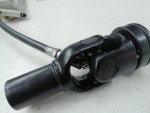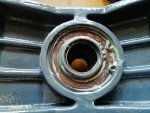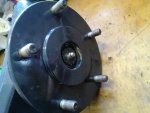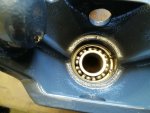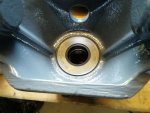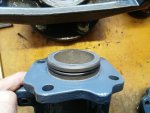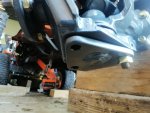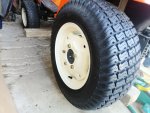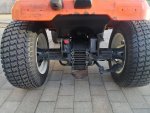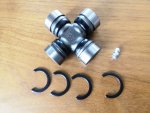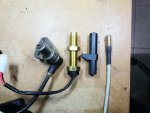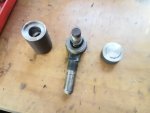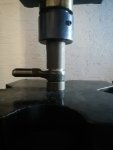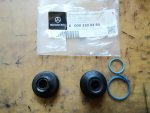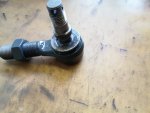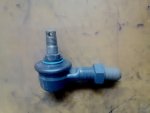Rear wheel steering repair
There are are few parts that can wear or can be damaged:
08101-06205 bearing drive shaft, 2x 6205
09502-55210 oil seal, 2x 25x52x10mm
67910-56430 bush 4ws rear axle, king pin 4x
08400-00010 ball bearing, thrust bearing 2x
08141-06008 ball bearing, wheel bearing 4x 6008 2RS
01517-71025 wheel stud, M10x1.25 40mm total length
66021-17120 wheel nuts M10x1.25
66111-46240 kit u-joint only, 2x 25x44 inside clip rings
o-ring king pin support to rear axle, 2x 50x3mm NBR shore 70
o-ring king pin support to knuckle bar, 2x 45x3mm NBR shore 70
o-ring king pin support to king pin, 2x 20x2.4mm NBR shore 70
I started by removing the paint with a CSD disk and then rounded off all sharp corners on all parts to improve paint thickness and hence get better corrosion protection.

Followed by sand blasting and chemical rust removal.


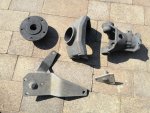
Then two thin layers of epoxy primer and top coat.
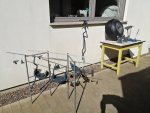
The wheel bearings were in good condition, so I removed the seal disks, cleaned them thoroughly and applied new wheel bearing grease.
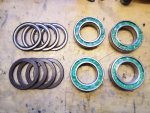
I first thought the thrust bearings are worn because the knuckle arm was scraping on the king pin support. But when the new bearings from Kubota arrived they were exactly the same size and no wear visible on the king pin support. I did not like that and made shims with 0.15mm thickness, 2 each side to go above the thrust bearing creating a 0.3mm gap and no scraping any more.
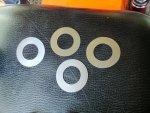
I got a set of nuts and bolts and washers from another tractor zinc electroplated and yellow passivated.

So everything ready to be assembled.




